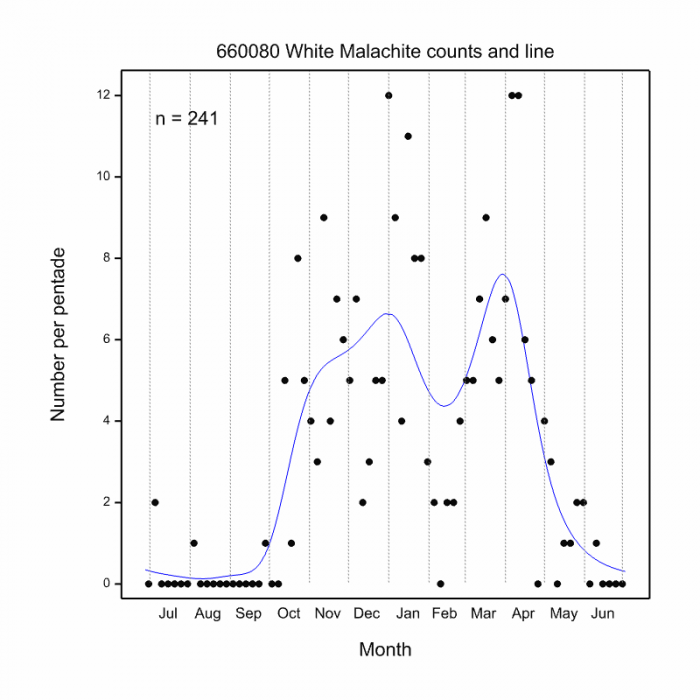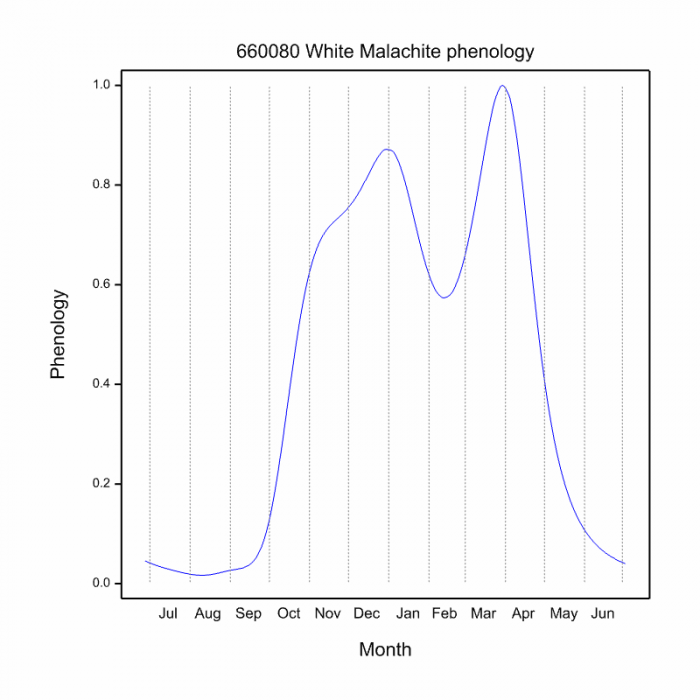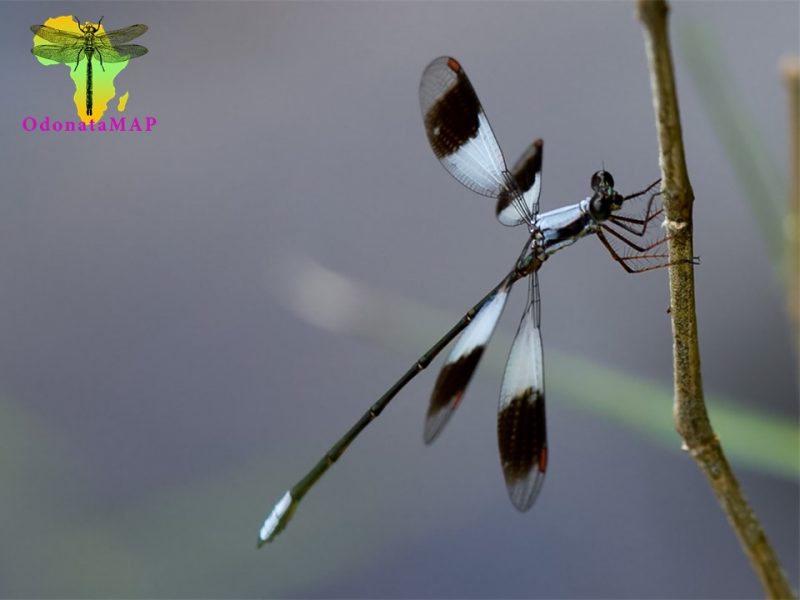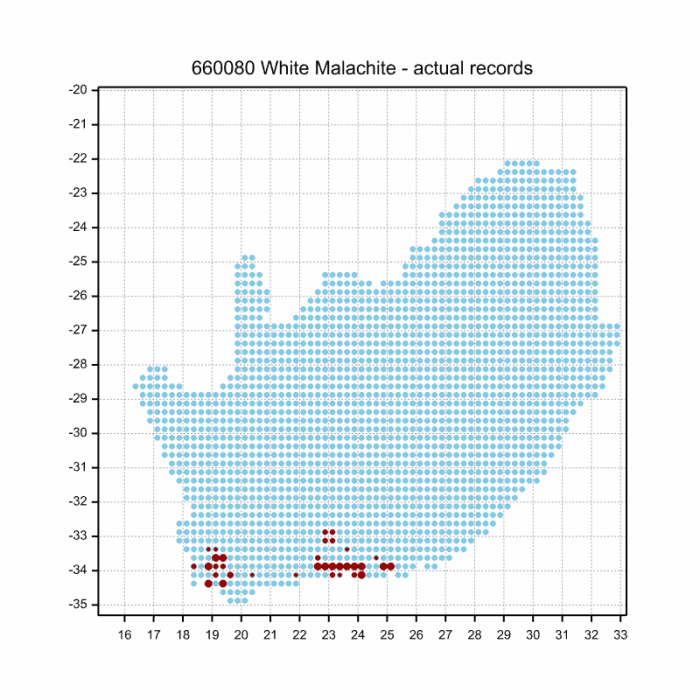View the above photo record (by Desire Darling) in OdonataMAP here.
Find the White Malachite in the FBIS database (Freshwater Biodiversity Information System) here.
Family Synlestidae
Chlorolestes umbratus – WHITE MALACHITE
Identification
Medium Sized
Length reaches 47 mm; Wingspan can attain 52 mm
Mature males develop a whitish pruinose bloom on the upper thorax. They also possess smoky-black and white wing bands. Non-pruinose males and females have a metallic-green or brown thorax and abdomen. The thorax sides have yellow antehumeral stripes. These individuals are perhaps most similar to Chlorolestes conspicuus, but that species is much larger and there is no overlap in size.
Both sexes are distinguished from other Chlorolestes by their small size, uniformly coloured pterostigmas and wing venation.
Click here for more details on identification.
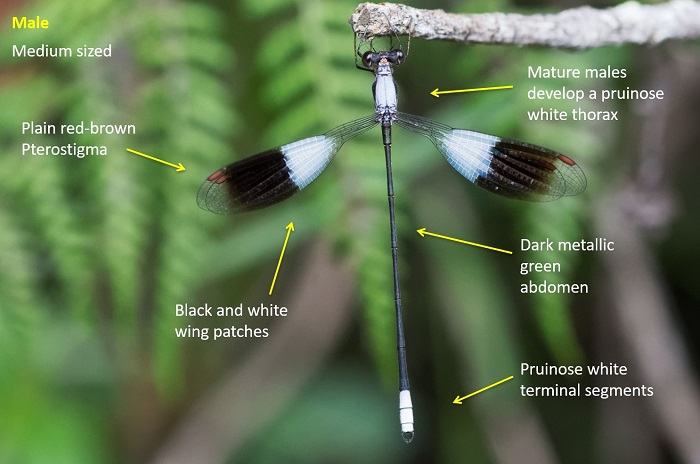
Nature’s Valley, Western Cape
Photo by Andre Marais
Habitat
The White Malachite is common along forested streams and rivers. It favours areas of shade and dappled light. Also occurs at well vegetated streams in fynbos environments. Usually seen perched over pools and calm sections of water.
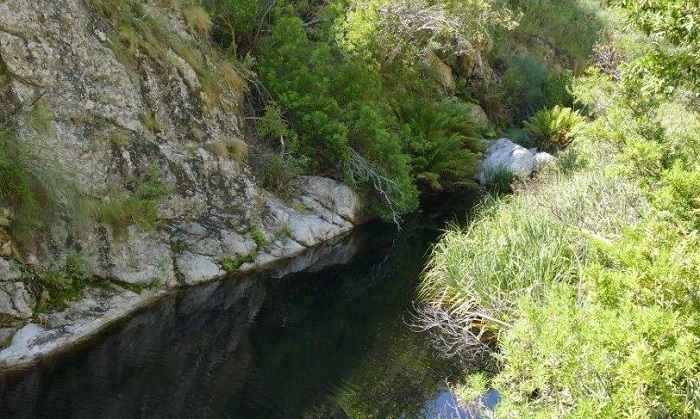
Photo by Sharon Stanton
Behaviour
An attractive species, mostly seen hanging from plants over the water. Mature males are conspicuous in the dappled forest light. Seldom seen away from water. Females are found in the same vicinity as the males, but are less conspicuous.
Status and Conservation
Chlorolestes umbratus is a fairly common but localised species. Listed as of Least Concern in the IUCN Red List of Threatened Species. It is moderately sensitive to habitat damage.
Distribution
It is endemic to the Western and Eastern Cape provinces in South Africa.
The map below shows the distribution of records for Chlorolestes umbratus in the OdonataMAP database, as at January 2020.
The following map below is an imputed map, produced by an interpolation algorithm, which attempts to generate a full distribution map from the partial information in the map above. This map will be improved by the submission of records to the OdonataMAP section of the Virtual Museum
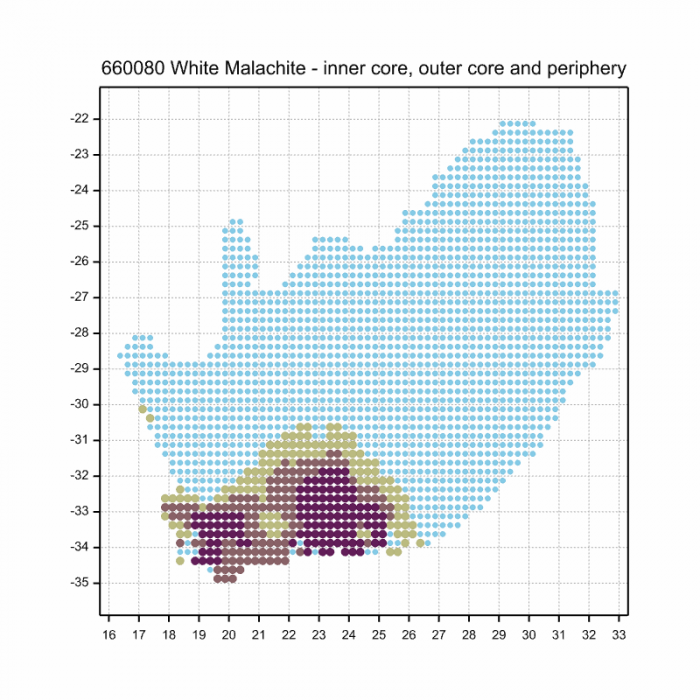

Ultimately, we will produce a series of maps for all the odonata species in the region. The current algorithm is a new algorithm. The objective is mainly to produce “smoothed” maps that could go into a field guide for odonata. This basic version of the algorithm (as mapped above) does not make use of “explanatory variables” (e.g. altitude, terrain roughness, presence of freshwater — we will be producing maps that take these variables into account soon). Currently, it only makes use of the OdonataMAP records for the species being mapped, as well as all the other records of all other species. The basic maps are “optimistic” and will generally show ranges to be larger than what they probably are.
These maps use the data in the OdonataMAP section of the Virtual Museum, and also the database assembled by the previous JRS funded project, which was led by Professor Michael Samways and Dr KD Dijkstra.
Phenology
